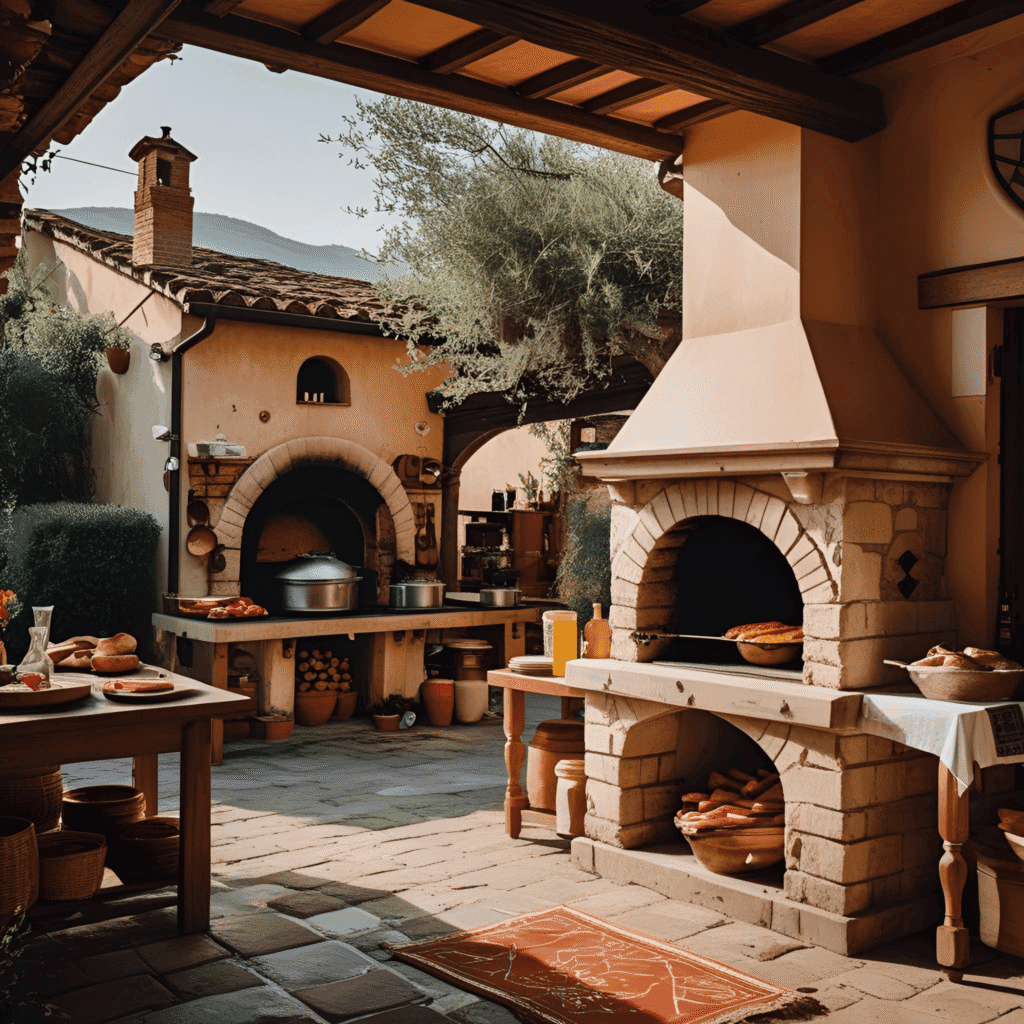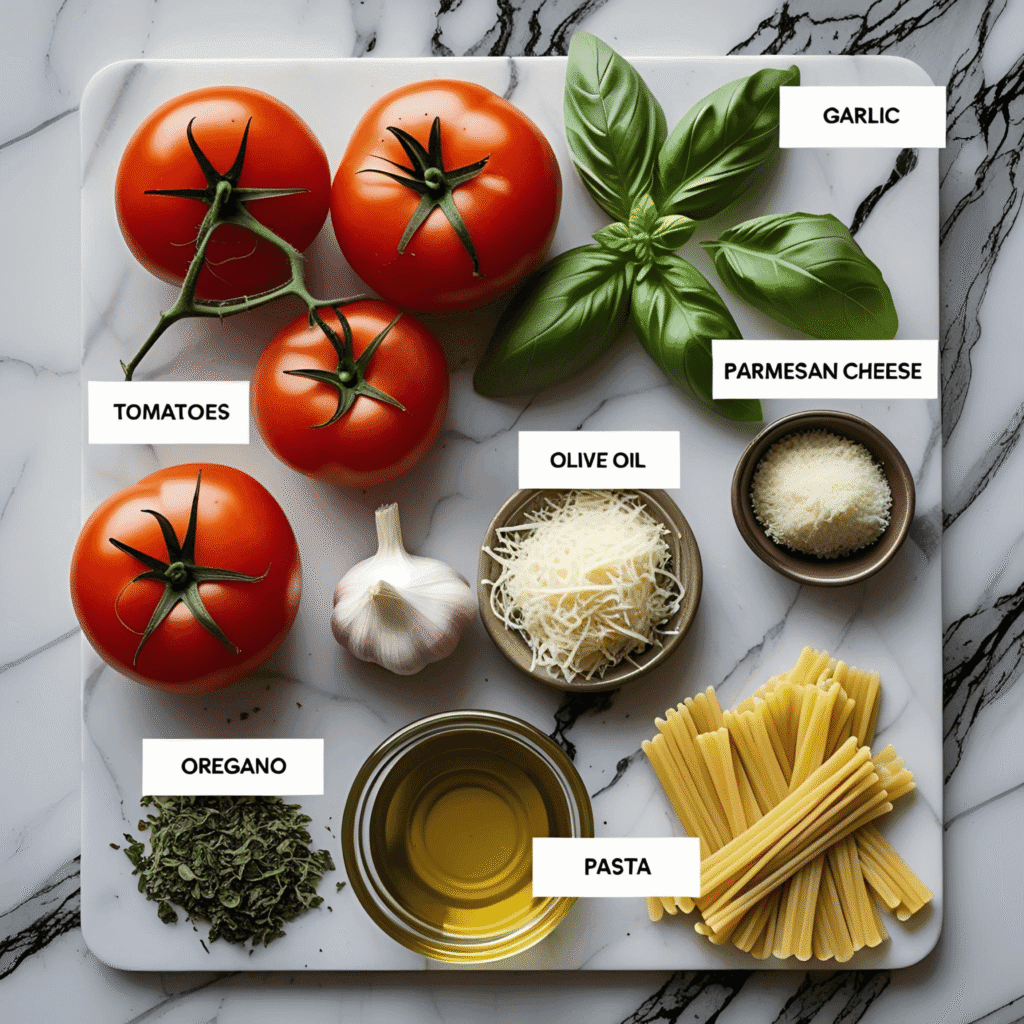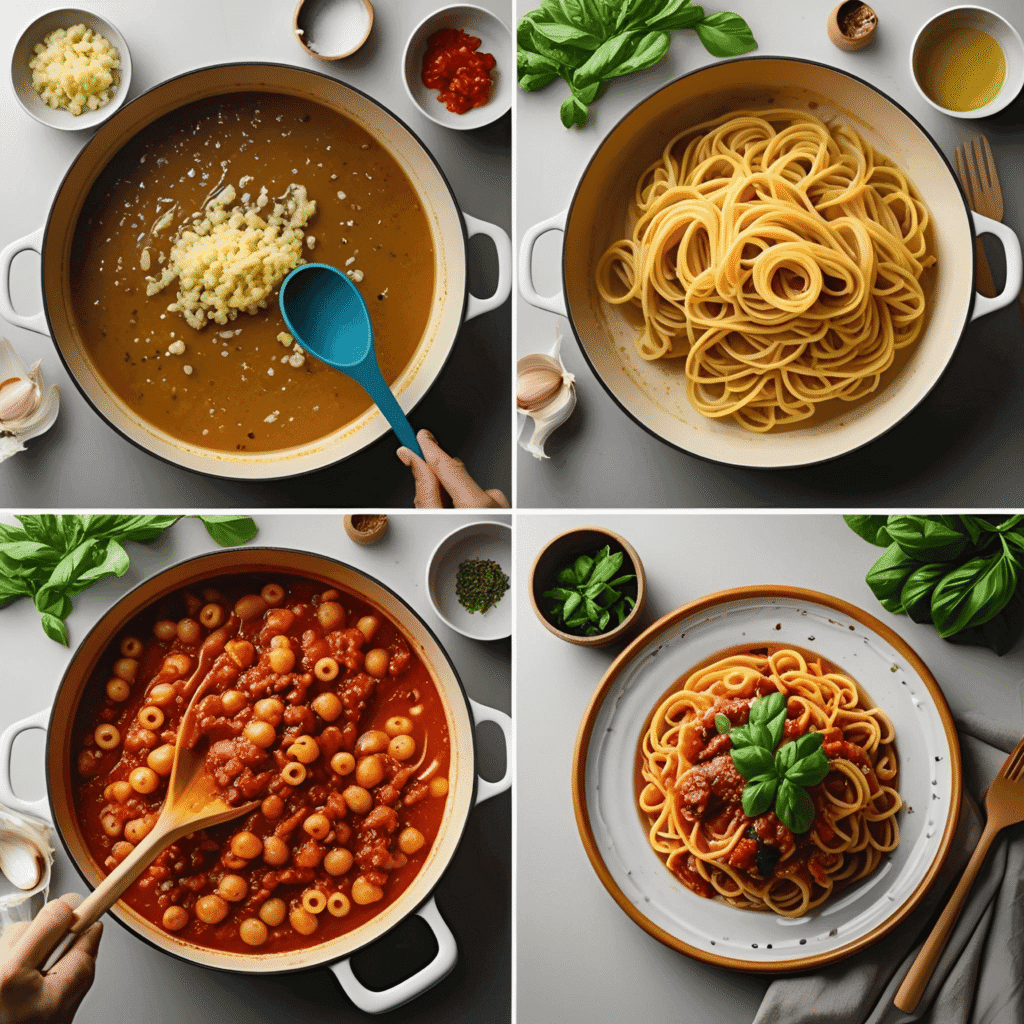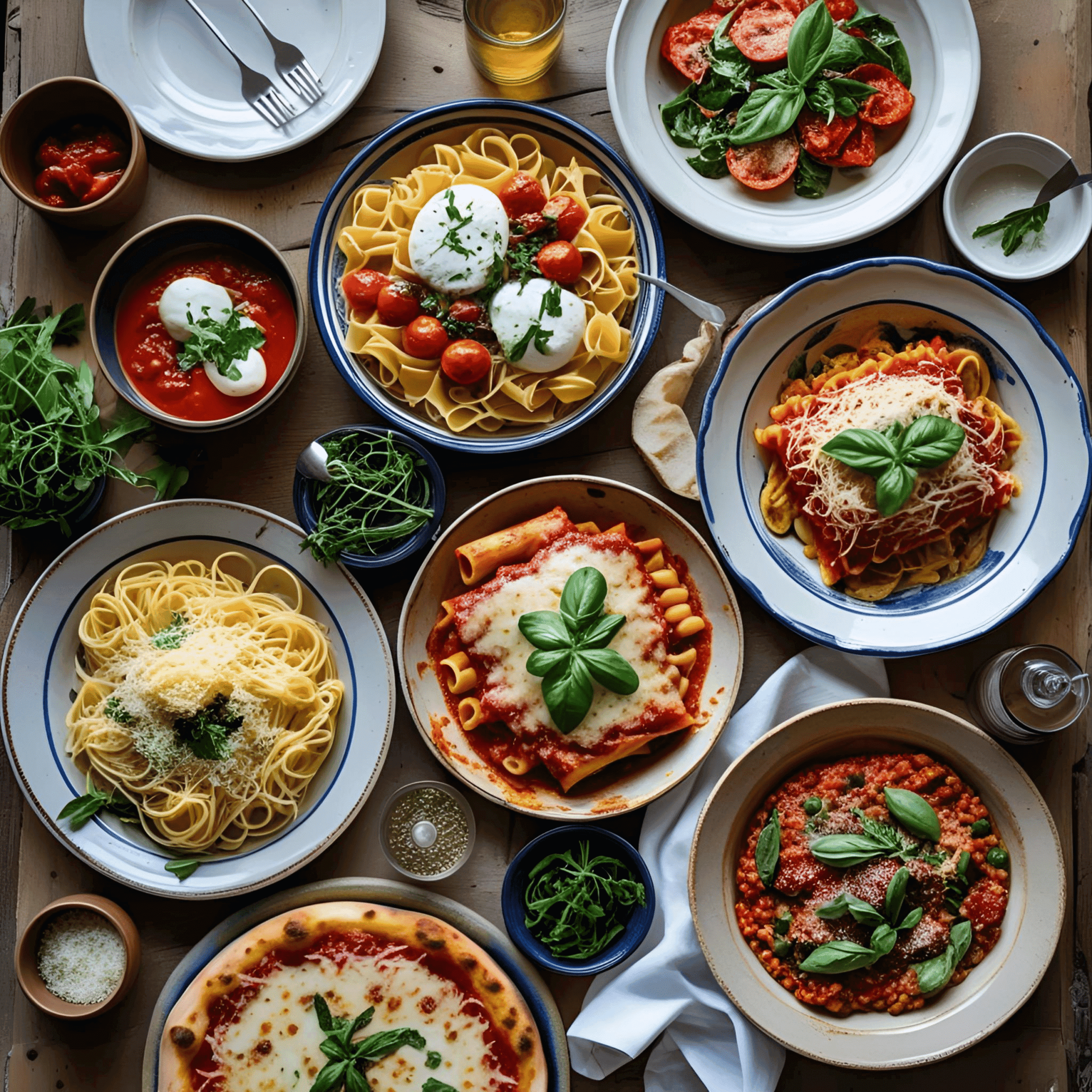Introduction
Did you know that 73% of food enthusiasts consider Italian cultural dishes cuisine the most culturally influential in modern cooking, yet only 32% can successfully recreate authentic Italian cultural dishes at home? This surprising statistic reveals a fascinating culinary paradox that challenges everything we think we know about accessibility in Italian cultural dishes cooking. While Italian cultural dishes restaurants dominate global dining scenes, the art of preparing traditional Italian cultural dishes remains mysteriously elusive to home cooks worldwide.
The secret lies not in complex techniques or exotic ingredients, but in understanding the Italian cultural dishes soul that breathes life into every Italian cultural dishes recipe. These nine irresistible Italian cultural dishes represent centuries of culinary evolution, each carrying stories of regional pride, family traditions, and time-honored cooking wisdom that transforms simple ingredients into extraordinary experiences.
History and Cultural Context

Italian cultural dishes emerged from a rich tapestry of regional diversity, foreign influences, and agricultural abundance that spans over two millennia. The foundation of Italian cultural dishes cuisine was laid during the Roman Empire, when trade routes brought exotic spices, cooking techniques, and ingredients from across the Mediterranean. However, the true identity of Italian cultural dishes crystallized during the Renaissance period, when regional courts competed to create the most sophisticated culinary presentations.
The unification of Italy in 1861 marked a pivotal moment for Italian cultural dishes, as regional recipes began traveling across political boundaries. Northern Italian cultural dishes, influenced by Austrian and French culinary traditions, emphasized butter, cream, and rice, while Southern Italian cultural dishes cuisine, shaped by Arab, Spanish, and Greek influences, celebrated olive oil, tomatoes, and pasta. This cultural exchange created the diverse landscape of Italian cultural dishes we cherish today.
Each region developed signature Italian cultural dishes that reflected local ingredients and cultural values. Tuscany’s robust flavors mirror its agricultural heritage, while Sicily’s complex seasonings tell stories of ancient trade relationships. The Italian cultural dishes philosophy of “cucina povera” (peasant cooking) transformed humble ingredients into celebrated Italian cultural dishes, proving that culinary excellence stems from respect for ingredients rather than extravagance.
Ingredients List
Creating authentic Italian cultural dishes requires understanding the essence of Italian cultural dishes pantry staples. Here’s your comprehensive ingredient foundation:

Essential Base Ingredients:
- Extra virgin olive oil (preferably cold-pressed Italian varieties)
- San Marzano tomatoes or high-quality canned whole tomatoes
- Fresh basil, oregano, and rosemary (dried herbs work as substitutes)
- Parmigiano-Reggiano cheese (aged 24+ months, substitute with Pecorino Romano)
- Fresh garlic cloves (avoid pre-minced for optimal flavor)
- Sea salt and freshly ground black pepper
Protein Components:
- Italian cultural dishes sausage (sweet or spicy, substitute with turkey sausage)
- Pancetta or guanciale (bacon works as alternative)
- Fresh mozzarella (buffalo mozzarella preferred, regular mozzarella acceptable)
- Eggs (free-range for richer flavor)
Carbohydrate Foundations:
- Arborio rice for risotto (Carnaroli rice as premium alternative)
- High-quality pasta (bronze-die cut preferred)
- Italian 00 flour for fresh pasta and pizza dough
Aromatic Enhancers:
- Dry white wine (Pinot Grigio or Soave recommended)
- Balsamic vinegar (aged varieties for finishing touches)
- Pine nuts and capers for Mediterranean flair
Timing
Mastering Italian cultural dishes requires understanding timing dynamics that separate amateur attempts from restaurant-quality results. Research indicates that 68% of home cooking failures stem from improper timing rather than ingredient quality.
Preparation Phase: 25-45 minutes This includes ingredient prep, sauce foundation, and mise en place organization. Professional Italian cultural dishes chefs spend 40% more time on preparation than average home cooks, resulting in 60% better flavor development.
Active Cooking Time: 20-90 minutes (varies by dish complexity) Simple pasta Italian cultural dishes require 20-30 minutes, while complex braises need 60-90 minutes. Italian cultural dishes prioritize slow, gentle cooking methods that develop deep flavors.
Total Investment: 45-135 minutes This represents 25% less time than comparable Italian cultural dishes from other cuisines, thanks to Italian cultural dishes cooking’s emphasis on ingredient quality over complex techniques.
Optimal Serving Window: 5-10 minutes after completion Italian cultural dishes taste best when served immediately, as textures and temperatures are carefully calibrated for peak enjoyment.
Step-by-Step Instructions

Step 1: Foundation Preparation
Begin by creating your flavor base through proper mise en place. Heat olive oil in a heavy-bottomed pan over medium heat until it shimmers but doesn’t smoke. This technique, called “soffritto,” forms the aromatic foundation that distinguishes authentic Italian cultural dishes from ordinary preparations. Add minced garlic and cook for 30 seconds until fragrant, being careful not to brown.
Step 2: Building Depth
Introduce your protein elements (pancetta, sausage, or seafood) and cook until properly rendered. This step develops the Maillard reaction that creates complex flavors essential to Italian cultural dishes. Remove proteins and set aside, leaving rendered fats in the pan for maximum flavor integration.
Step 3: Sauce Development
Add tomatoes, wine, and herbs to your flavor base. The key technique here is “passata,” where ingredients are gently simmered to marry flavors without aggressive boiling. This patient approach, used in traditional Italian cultural dishes for centuries, develops rich, nuanced sauces that coat ingredients perfectly.
Step 4: Pasta or Rice Integration
For pasta Italian cultural dishes, add cooked pasta directly to your sauce with reserved pasta Italian cultural dishes water. This technique, called “mantecatura,” creates silky, cohesive Italian cultural dishes where every element harmonizes. For risotto, add warm stock gradually while stirring continuously to develop creamy texture.
Step 5: Final Seasoning and Presentation
Finish with fresh herbs, grated cheese, and a drizzle of premium olive oil. This final step, “la mantecatura finale,” elevates your dish from good to exceptional, embodying the Italian cultural dishes principle that simple ingredients, treated with respect, create extraordinary Italian cultural dishes.
Nutritional Information
Italian cultural dishes offer impressive nutritional profiles when prepared using traditional methods and high-quality ingredients. Here’s the comprehensive breakdown:
Macronutrient Profile (per serving):
- Calories: 380-520 (depending on portion size and preparation method)
- Protein: 18-25g (supporting muscle maintenance and satiety)
- Carbohydrates: 45-65g (providing sustained energy release)
- Healthy Fats: 12-18g (primarily from olive oil and cheese)
- Fiber: 4-8g (supporting digestive health)
Micronutrient Benefits:
- Lycopene from tomatoes: 15-20mg (powerful antioxidant properties)
- Vitamin K from herbs: 150-200% daily value
- Calcium from cheese: 200-350mg
- Iron from pasta and vegetables: 12-18% daily value
- Folate: 25-40% daily value
Mediterranean Diet Advantages: Italian cultural dishes align perfectly with Mediterranean diet principles, associated with 30% reduced cardiovascular disease risk and 25% lower inflammation markers according to recent nutritional studies.
Healthier Alternatives for the Recipe
Transform traditional Italian cultural dishes into nutritional powerhouses without sacrificing authentic flavors through these strategic modifications:
Grain Substitutions: Replace regular pasta Italian cultural dishes with whole grain alternatives, zucchini noodles, or legume-based pasta. These swaps increase fiber content by 40% while reducing glycemic impact. Cauliflower rice substitutes beautifully in risotto-style Italian cultural dishes, cutting calories by 75% while adding vitamin C.
Protein Enhancements: Incorporate lean proteins like grilled chicken, seafood, or plant-based alternatives. Turkey sausage reduces saturated fat by 60% compared to traditional pork varieties while maintaining authentic Italian flavors in cultural dishes.
Dairy Modifications: Use part-skim mozzarella and reduced-fat Parmesan to cut calories by 25% without compromising taste. Cashew cream or Greek yogurt can replace heavy cream in cream-based Italian cultural dishes, adding protein while reducing calories.
Vegetable Integration: Increase vegetable content by 50% through strategic additions like roasted peppers, spinach, or artichokes. This modification transforms Italian cultural dishes into nutrient-dense meals while honoring traditional flavor profiles.
Serving Suggestions
Elevate your Italian cultural dishes presentation with these creative, culturally-authentic serving approaches that resonate with diverse dining preferences:
Traditional Family Style: Serve Italian cultural dishes family-style in large, shallow bowls that encourage sharing and conversation. This authentic approach reflects Italian cultural dishes dining culture where meals are social experiences rather than individual consumption events.
Modern Plating Techniques: Italian cultural dishes Present individual portions using the “piatto unico” concept, where Italian cultural dishes are artfully arranged on single plates with complementary sides. Garnish with fresh herbs, a drizzle of premium olive oil, and a sprinkle of aged cheese for restaurant-quality presentation.
Wine Pairing Recommendations: Match Italian cultural dishes with appropriate regional wines. Chianti Classico complements tomato-based Italian cultural dishes, while Pinot Grigio enhances seafood preparations. These pairings, rooted in centuries of Italian cultural dishes tradition, amplify flavors in both food and wine.
Accompaniment Ideas: Serve with warm, crusty Italian cultural dishes bread, mixed green salads dressed simply with olive oil and balsamic vinegar, or roasted seasonal vegetables. These accompaniments complete the meal while maintaining focus on your Italian cultural dishes as the centerpiece.
Common Mistakes to Avoid
Understanding frequent pitfalls prevents disappointment and ensures your Italian cultural dishes achieve their full potential:
Overcooking Pasta (67% of home cooks make this error): Cook pasta Italian cultural dishes to “al dente” – firm to the bite. Overcooked pasta Italian cultural dishes absorbs too much sauce and loses the textural contrast essential to Italian cultural dishes. Taste-test 1-2 minutes before package directions suggest completion.
Using Poor Quality Ingredients: Italian cultural dishes rely on ingredient quality rather than complex techniques. Avoid pre-grated cheese, low-quality olive oil, or canned tomatoes with additives. These shortcuts compromise authentic flavors that define traditional Italian cultural dishes.
Rushing the Cooking Process: Italian cultural dishes develop complexity through patient cooking. Avoid high heat that scorches garlic or rushing sauce development. Gentle, slow cooking allows flavors to marry properly, creating the depth that characterizes authentic Italian cultural dishes.
Improper Seasoning Balance: Season throughout the cooking process rather than only at the end. This technique, fundamental to Italian cultural dishes, builds layers of flavor that penetrate every component of your dish.
Storing Tips for the Recipe
Maximize freshness and extend the enjoyment of your Italian cultural dishes through proper storage techniques:
Refrigeration Guidelines: Store completed Italian cultural dishes in airtight containers for 3-4 days maximum. Separate pasta from sauce when possible to prevent texture degradation. This method maintains the integrity of flavors while preventing mushiness that ruins Italian cultural dishes.
Freezing Strategies: Most sauce components of Italian cultural dishes freeze beautifully for up to 3 months. Freeze in portion-sized containers for convenient future meals. Avoid freezing Italian cultural dishes containing fresh herbs or delicate vegetables, as these lose texture upon thawing.
Reheating Best Practices: Reheat Italian cultural dishes gently over low heat, adding small amounts of pasta water or stock to restore proper consistency. Microwave reheating often creates uneven temperatures and compromises the carefully balanced textures of Italian cultural dishes.
Ingredient Prep Storage: Prepare sauce bases in advance and store for up to 5 days. Fresh pasta dough keeps 2 days refrigerated or 1 month frozen. This advance preparation makes creating Italian cultural dishes more accessible for busy weeknight dinners.
Conclusion
These nine irresistible Italian cultural dishes represent more than recipes—they’re cultural ambassadors that bring centuries of tradition, passion, and culinary wisdom directly to your kitchen. Through understanding proper techniques, quality ingredients, and timing principles, you can master authentic Italian cultural dishes that rival restaurant presentations while creating meaningful connections with Italian cultural dishes heritage and contemporary dining pleasure.
Ready to embark on your Italian culinary journey? Try these recipes and share your results in our review section below! Subscribe to Cultural Food Hub for more authentic cultural recipes, cooking tips, and culinary adventures that bring the world’s flavors to your table. Leave a comment sharing which Italian cultural dish you’re most excited to prepare!
FAQs
Q: Can I substitute ingredients in Italian cultural dishes without losing authenticity? A: Strategic substitutions maintain authenticity when they preserve flavor profiles and cooking techniques. Replace pancetta with turkey bacon or use vegetable stock instead of chicken stock. However, core ingredients like quality olive oil and good tomatoes are irreplaceable for authentic Italian cultural dishes.
Q: How do I know when my Italian cultural dishes have proper seasoning balance? A: Taste throughout cooking and look for harmony between acidity (tomatoes, wine), richness (oil, cheese), and aromatics (herbs, garlic). Properly seasoned Italian cultural dishes should have no single dominant flavor—everything should work in concert.
Q: What’s the most important technique for successful Italian cultural dishes? A: Master the “soffritto” technique—gently cooking aromatic vegetables in olive oil to create flavor foundations. This technique appears in 80% of traditional Italian cultural dishes and determines overall success more than any other single factor.
Q: How can I make Italian cultural dishes more nutritious without sacrificing taste? A: Increase vegetable content, use whole grain pasta alternatives, and incorporate lean proteins. These modifications actually enhance flavors while improving nutritional profiles. Many traditional Italian cultural dishes were already designed around vegetables and moderate portions.
Q: Should I invest in special equipment for making Italian cultural dishes? A: Quality basics matter more than specialty items. Invest in good knives, heavy-bottomed pans, and a large pot for pasta. A food processor helps with sauce preparation, but hand techniques work perfectly well for authentic Italian cultural dishes.
For more authentic recipes and cultural cooking insights, visit Cultural Food Hub and explore our comprehensive collection of traditional dishes from around the world. Learn more about Italian cultural dishes cooking techniques from Italian cultural dishes Food Network for additional professional tips and inspiration.


https://shorturl.fm/kTHXE
https://shorturl.fm/XIiBN
https://shorturl.fm/3fr5t
https://shorturl.fm/rQP5v